 A Landlord’S Guide To Certificates Smoke Alarms, Co Alarms & Legionella Risk
A Landlord’S Guide To Certificates Smoke Alarms, Co Alarms & Legionella Risk
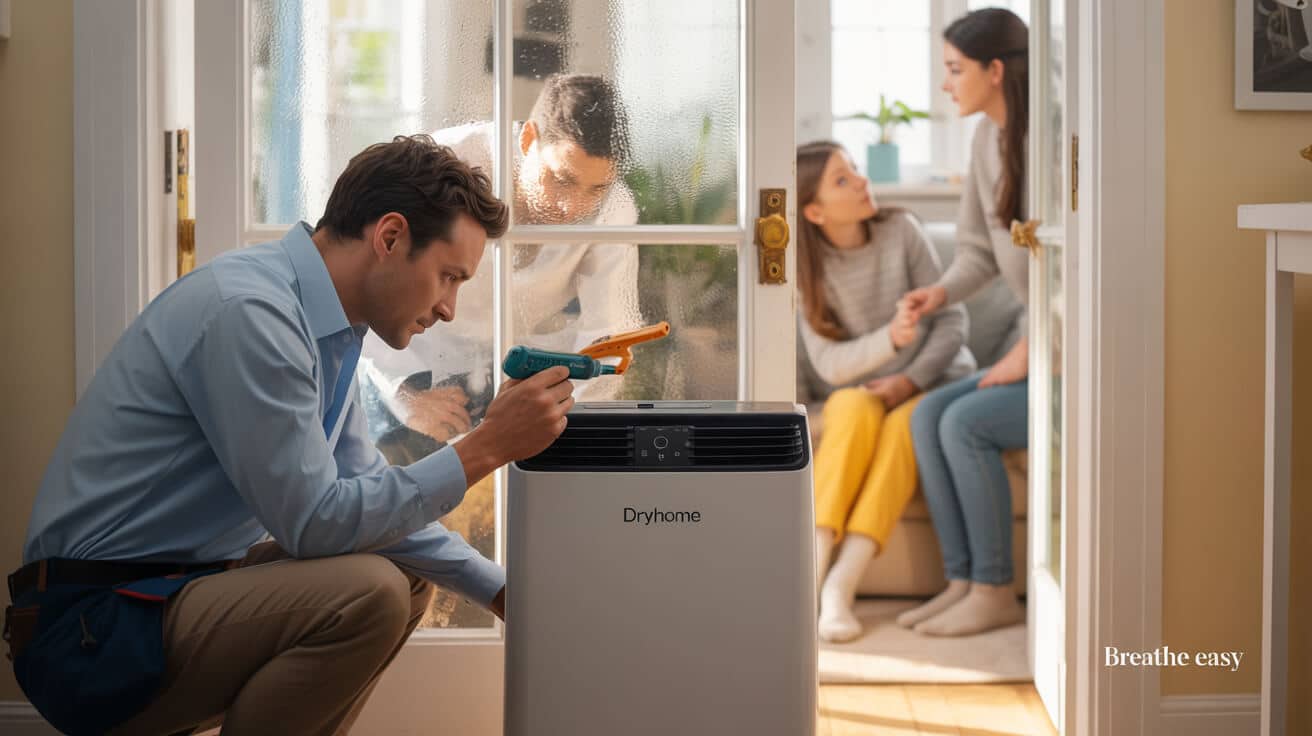
Does UK Law Actually Require Compliance Certificates, or Real-World Proof of Safety?
Landlords and property managers often get tangled in the myth that an official compliance certificate is your only defence against legal trouble. In reality, UK law focuses on one thing above all: your ability to prove, quickly and clearly, that your property is safe and risks have been managed. You don’t need to chase expensive bits of paper that no official ever actually asks to see—you need robust, practical evidence you can reach in seconds when council, insurer, or tenant demands it.
It’s the lack of proof—not the lack of a piece of paper—that puts landlords on the hook when things go wrong.
So why do so many individuals still panic over paperwork? Old habits, pressure from agents, and a market still full of “pay-for-certificate” sellers stoke unnecessary anxiety. The reality: in modern compliance, it’s demonstrable action (alarms tested, faults fixed, risks assessed, actions logged) that keeps you safe—not a so-called certificate written by someone else.
Council spot-checks, insurance claims, and tenant disputes all demand you show a clear audit trail: dates, photos, logs, and receipts. “Certificate” at the top means nothing if you can’t instantly prove who did what, when, and how you responded when a risk appeared. For property owners wanting to sleep at night, that’s a relief—the power to comply and protect yourself sits firmly in your hands, not locked in an agent’s drawer.
What Documents Actually Prove You’re Compliant With Smoke, CO, and Fire Alarm Laws?

The law is specific: you must instal and test a smoke alarm on every storey and a carbon monoxide alarm in any room with a solid fuel appliance (this excludes boilers). Nowhere does regulation state you must pay for an “alarm certificate.” What matters most is practical, real-world evidence you can produce fast:
- Date-stamped photos: of every alarm after installation or annual check. The date in the digital file is gold during an audit.
- Receipts, invoices, or signed logs: proving installation and testing. If you DIY, a note or signed checklist is fine.
- Checklists filled at each pre-tenancy inspection: , signed by you, an agent, or even the tenant.
- Organised digital folders: —one per property, matching addresses and date—so files can be shown with a few taps.
Three things beat a certificate every time: a photo that shows date and spot, a co-signed checklist, and a provable record of action.
You’re not legally obliged to use an electrician or specialist for alarm fitting in a standard home. But if you can’t prove you checked and tested before tenants moved in (and kept up maintenance), having a printed “certificate” offers little real help in court or with insurers. Digital, date-traceable records are what matter most.
Do You Need Official Certificates, or Just Usable Compliance Evidence?

There’s a stubborn myth—kept alive by legacy letting agencies—that agents, lenders, or tenants can demand a certificate. UK law cuts through the noise: it’s not certificates but immediate, verifiable proof that resolves compliance questions.
Types of evidence that work:
- Clear, date-stamped images: —where it’s installed, showing the alarm is present.
- Signed inspection forms, digital logs, or hand-written checklists: —simple is best.
- Installer’s job notes or engineer’s receipts: —only if you paid for a pro.
- PDFs, scans or screenshots: —even a WhatsApp message or cloud record can be enough, as long as it’s authentic and accessible.
In most disputes, a one-page co-signed checklist settles the matter faster than any £45 certificate bought online.
A “certificate” is only formally required when a letting agent’s checklist or specific insurance product says so—and even then, a decent installer’s work order almost always suffices. For single lets, HMOs, or blocks, the ongoing accuracy and traceability of your records—not the name or font of the file—will keep you off the council’s radar and your insurer on your side.
Whose Job Is It to Test Alarms and How Fast Must a Landlord Respond to Faults?
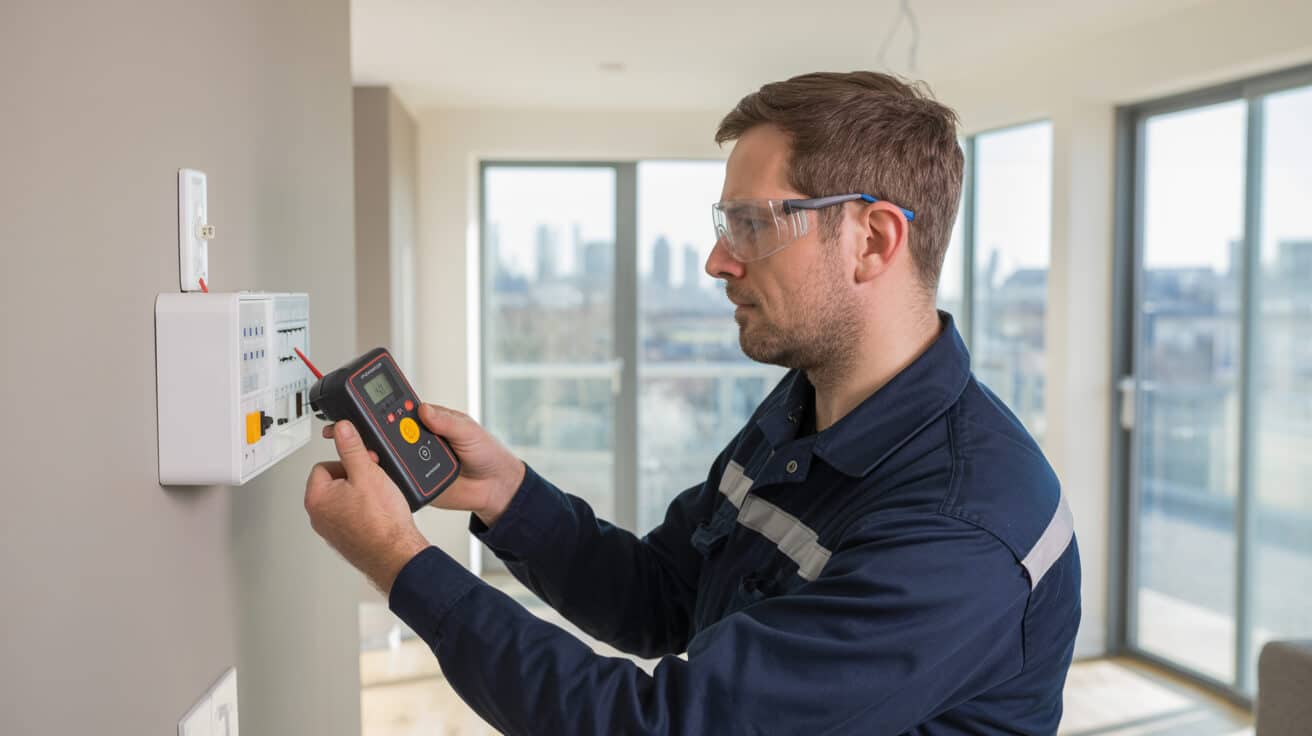
The letter of the law is clear: as landlord, you must ensure all required alarms work at the start of every tenancy. While tenants should test alarms monthly, you can’t shift the legal risk to them. If an alarm fails or is reported missing, it falls to you—not your tenant or agent—to act fast. Anything more than two working days’ delay can see councils and insurers step in, with fines or coverage denial on the table (Shelter).
- Act as soon as you learn: about a faulty or missing alarm; evidence you responded quickly is key.
- Do not ask tenants to handle hard-wired/alarm faults: —a qualified contractor or technician is needed.
- Keep every record: —dated messages, photo updates, completed checklists, engineer’s reports—in your compliance log.
Wait more than 48 hours to solve an alarm problem and you risk instant council penalties or rejected insurance.
Landlords who document every walkthrough and repair—digital photos, times, actions—find that compliance becomes routine, not a scramble or a drama.
Are Landlords Required to Hold Legionella Certificates or Pay for Lab Tests?
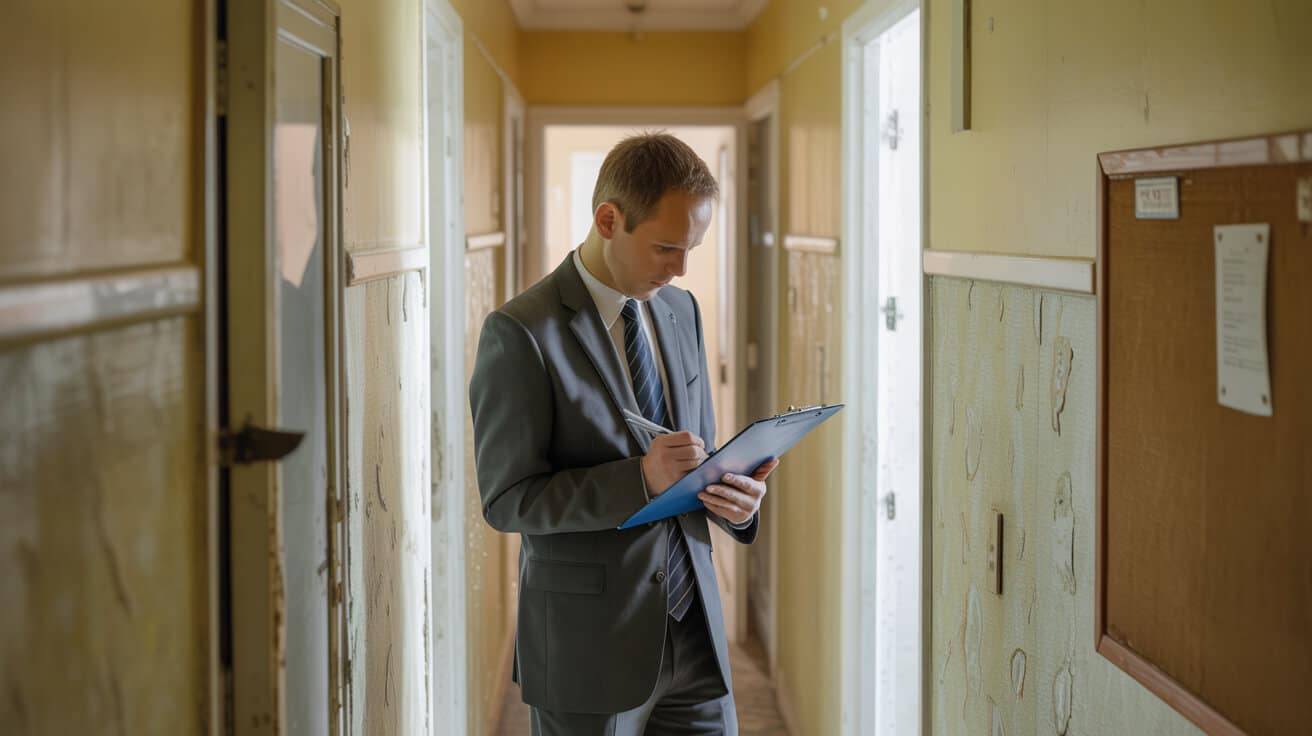
Let’s end one of the most persistent compliance myths: the law asks you to assess and manage Legionella risk, not to hand over money for periodic certificates or lab reports. For almost all standard homes, the Health and Safety Executive’s own guidance is plain: a sensible, written risk assessment (checklist, notes, photos)—prepared and updated as situations change—is fully adequate for compliance.
Who requires what?
- Every residential let: must be assessed for Legionella risk (usually with a simple checklist).
- Blocks, HMOs, and vulnerable settings: (care homes, gyms, certain student housing) may need expert opinions or formal reports.
- Reassess each time plumbing is altered, the building sits empty, or tenants change.:
The only thing official about Legionella compliance for landlords is the expectation you have *evidence* a thoughtful check has actually been done—no magic document or lab bill needed.
For most landlords, photos of water storage, notes of pipe temperatures, and brief written records of any flushing, cleaning, or repairs will meet agent and regulatory requirements.
Can Landlords Complete a Legionella Risk Assessment Themselves?
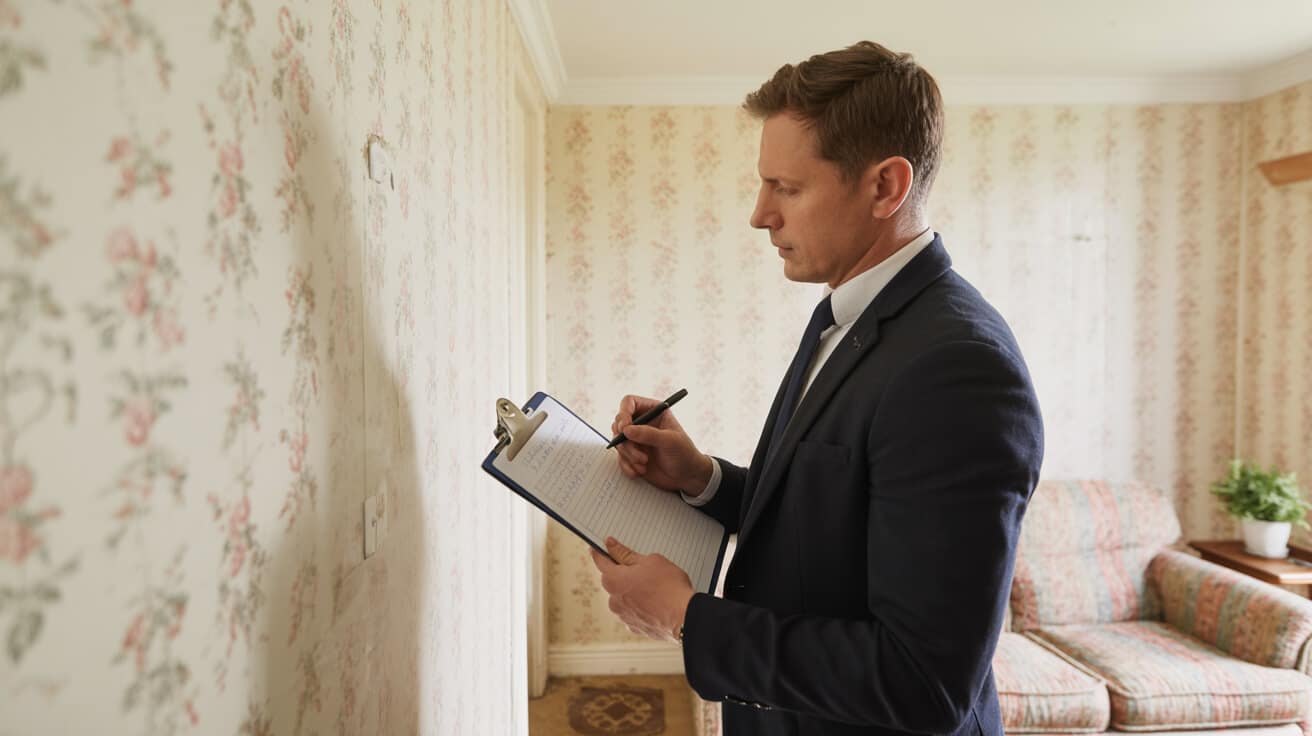
Absolutely. DIY Legionella risk assessments are fully valid for single lets and most small portfolios, provided you use a recognised checklist (HSE INDG458), answer carefully, and log each finding.
Essential steps:
- List every hot and cold water outlet, tank, and dead leg: in the system.
- Log typical water temperatures: (hot >50˚C, cold <20˚C).
- Note any remedial action: —like “ran little-used tap for 2 mins,” or “descaled showerhead.”
- Date and sign your checklist: . Scan and save a digital copy in your property folder.
A scanned checklist tied to a date and property address beats an official certificate that no one can locate when it counts.
Unless a property has specialist features (solar tanks, cooling towers) or you’re dealing with at-risk tenants, a well-maintained landlord risk record is more than enough for compliance and safety due diligence.
How Should Landlords Organise and Store Proof of Compliance for Audits or Disputes?
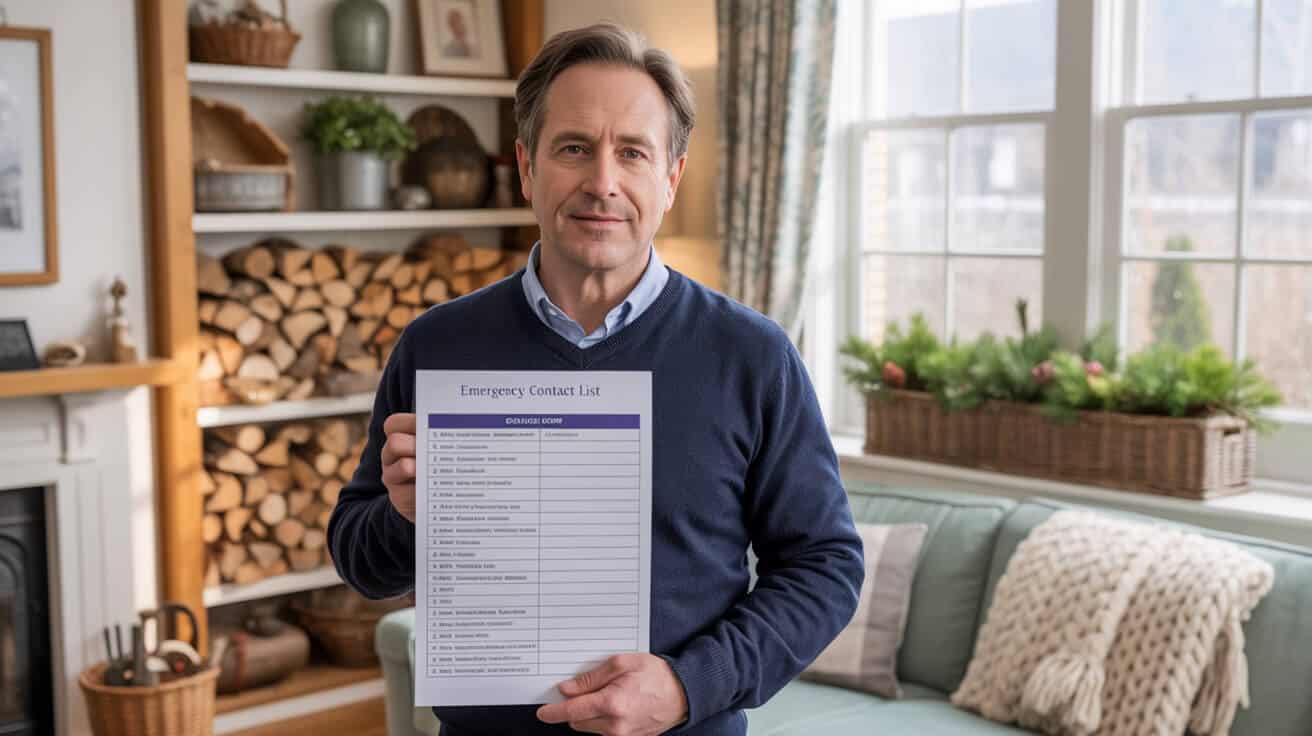
Accessible, up-to-date records are your best insurance. By consistently storing photos, logs, checklists, and receipts for two years (minimum) per property, you ensure any audit, claim, or query is an open-and-shut case. Organisation is as valuable as compliance itself.
Best practice:
- Name digital records by property and date: —for instant, stress-free retrieval (e.g., “2024-06-MainSt-SmokeAlarms.pdf”).
- Retain all alarm, Legionella, and repair documents for two years: for each property you let or manage.
| Record Type | Use Case | Minimum Retention |
|---|---|---|
| Alarm photos | Changeover/audit | 2 years |
| Signed checklist | Inspection/proof | 2 years |
| Repair receipts | Insurance claims | 2 years |
| Legionella record | Risk audits | 2 years |
The landlords who avoid the pain are those who keep a simple, up-to-date digital folder—not a stack of fancy certificates.
Update these records after every new tenancy, repair, or check, and you’ll be ready for councils, letting agents, or insurers—no last-minute stress, no holes for disputes.
How Does Bundled Property Safety Save Landlords Time and Money?
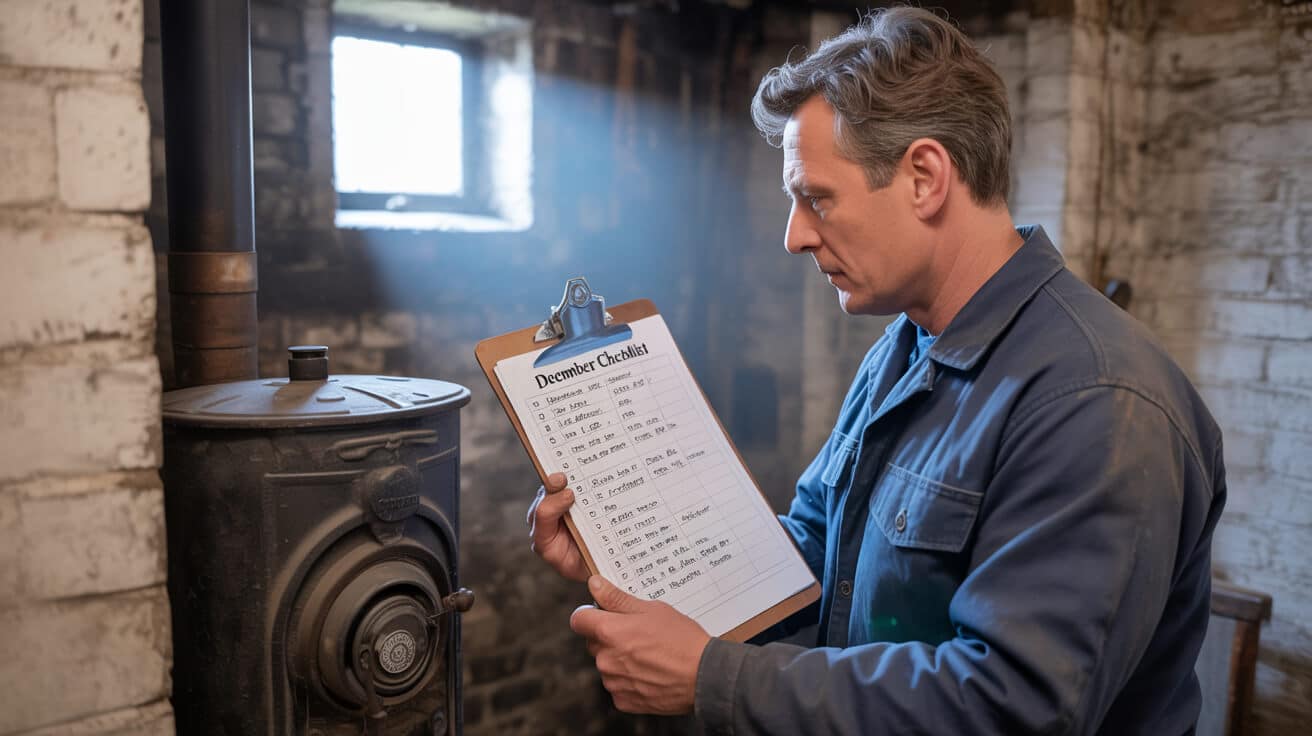
The most proactive property owners now combine annual checks—alarms, Legionella, even key repairs—into a single scheduled visit. This shrinks admin, boosts safety, and keeps everything logged and digitally accessible. A thorough, signed checklist and batch of fresh photos gives you every proof you’ll ever need, with minimal disruption to tenants.
All Services 4U’s approach is a blueprint for this style: trained, certified engineers handle every check in one pass, create instant logs, and provide digital records you can grab at a moment’s notice. Clients receive reminders for every upcoming obligation—so there’s no chance a renewal, annual check, or simple repair gets missed.
Benefits at a glance:
- One visit, all fundamentals checked: , without disturbing tenants multiple times.
- Digital summary—photos, checklists, logs—instantly email-ready: for audits or compliance requests.
- City & Guilds certified engineers; all work is signed, sealed, and above board.:
- Reminders and notifications for renewals: —so you’re always a step ahead, never caught out by expiry or surprise inspection.
The only thing that makes compliance a nightmare is disorganisation; otherwise, it can be as easy as one call and a single digital pack.
Bundled safety is becoming the UK standard, especially for landlords and agents managing more than one property. It’s leaner, clears away the risk of missed requirements, and above all, delivers absolute peace of mind.
Schedule Your All-in-One Safety Audit With All Services 4U — Protect Your Properties and Your Reputation
Every missed record, delayed action, or “maybe later” approach to compliance gives risk a foothold—and your tenants, agents, and insurers notice. All Services 4U gives property owners and managers a frictionless experience: qualified, DBS-cleared technicians, City & Guilds certificated, performing every safety check and delivering digital evidence that your property is ready for any audit, inspection, or claim.
This isn’t just a legal checkbox—it’s a brand-smart move. You safeguard lives, protect your business from fines, and cement your reputation as someone who leads, not lags. Same-day digital proof, hassle-free handovers, every requirement covered before anyone even asks: that’s modern property ownership done right.
Contact All Services 4U now to schedule your annual review and discover just how straightforward full compliance can be. A minute of action now means years of peace of mind.
Frequently Asked Questions
Why does legal compliance for smoke alarms, CO alarms, and Legionella require more than just a certificate?
Legal compliance for smoke alarms, CO alarms, and Legionella in UK rentals demands tangible, time-stamped proof of action—not just paperwork labelled “certificate.”
Most landlords believe that a printed certificate is a shield, but UK law actually puts the spotlight on evidence: clear, retrievable, and authentic records showing exactly what you installed, inspected, and when.
If you’re called to account—it’s your ability to rapidly show what, how, and when you acted that keeps you safe from fines and disputes.
*Landlords who can present a real audit trail in minutes rarely end up paying out penalties—while those who chase certificates after the fact get left exposed.*
Distinction Between Certificate and Evidence
- Certificates: are often produced by contractors as reassurance but aren’t a legal requirement for most routine alarm or Legionella checks.
- Proof documents: —installation photos, test logs, signed checklists—protect you in a claim or audit.
- The Smoke and Carbon Monoxide Alarm (England) Regulations 2022 and HSE Legionella guidelines both emphasise acting and documenting, not simply buying a piece of paper.
Practical Evidence Landlords Must Hold
- Installation: Photos of alarms as fitted, with visible timestamp or supporting digital meta-data.
- Maintenance: Regular, annotated logs of alarm testing/service, ideally grouped by property and date.
- Legionella: Completed HSE risk assessment checklists (even done DIY) and a brief record of actions (temperature checks, flushing, visible risk removal).
- Contractor reports or third-party logs: Stored, easily accessed, and matched to the property address.
Why It’s Dangerous to Rely on Certificates Alone
- Councils and insurers look for a history of your actions—not a “one-off certificate.”
- A certificate can be lost, disputed, or ignored if there’s no supporting evidence.
- Real compliance is demonstrated by your ability to prove you planned, acted, and followed up—every time.
With All Services 4U, each visit is followed by a digital proof pack—so you’re always ready if anyone asks.
How should landlords structure and back up safety documentation so it can survive audits, claims, and unannounced inspections?
Organising your compliance documentation into a fully digital, instantly accessible evidence pack for each property isn’t just good practice—it’s how the strongest landlords stay audit-proof and stress-free.
Council inspectors and insurers are increasingly demanding not just “what you did” but “how quickly you can show it.” If your evidence is scattered or locked in emails and paper folders, you’re at risk.
*Most property disputes are lost not through inaction, but through the inability to instantly retrieve a dated log or event photo.*
Building a Robust Compliance Archive
- Systematic Filing:
- Use dedicated cloud folders (OneDrive, Dropbox, landlord apps) labelled by property address.
- Within each property, subfolders by event type (installation, maintenance, Legionella, repairs).
- Event Logging:
- For every new alarm, repair, or risk check, file photo(s) and record who, what, when, and where.
- Date-stamp every digital file; add scanned or photographed invoices if done by a contractor.
- Retention:
- Hold all records for a minimum of two years post-event; longer if high risk or for insurance purposes.
- Retrievability:
- Use search-friendly file names (e.g., “Flat3-CO-Tested-240524.jpg”) to find anything in seconds.
Practical Table: Compliance File System
| Item | Where to File | Format | Keep For |
|---|---|---|---|
| Instal photo | “Smoke/CO Instals” | JPEG/PNG | 2+ years |
| Test log | “Alarm Logs” | PDF/Excel/Notes | 2+ years |
| Legionella doc | “Legionella” | PDF/Scan | 2+ years |
| Contractor doc | “Professional” | PDF/Photo | 2+ years |
With All Services 4U, audit-ready digital packs are supplied as standard—so when an authority knocks, you never have to dig or explain.
Who is actually responsible for each stage of testing, fixing, and reporting? What counts as a legal response timeframe?
Both landlord and tenant have defined roles in property safety—but when it comes to accountability, the legal bar falls squarely on you as the owner.
Even if a tenant fails to test their alarm or report an issue, you’ll be asked to prove your starting point, your instructions, and your reaction.
*The fastest way to unravel a safety claim is to show you had everything in place, and replied rapidly to issues. Anything less, and councils will make an example.*
Landlord Versus Tenant Responsibility
- At move-in:
- Landlord instals, tests, and logs each alarm (ideally in writing and with images).
- Shares operating instructions with tenant; logs the handover in records.
- During tenancy:
- Tenant is expected to test monthly and report faults, but isn’t responsible for repairs.
- Landlord remains the legal respondent for any reported issue.
- Legionella:
- Landlord assesses and records Legionella risk at least annually, after void periods, or after plumbing/heating works.
- Specialist checks are only triggered for complex risks—otherwise, HSE expects DIY logs.
Table: Who Does What?
| Stage | Landlord | Tenant | Professional |
|---|---|---|---|
| Alarm instal/test | Yes (always) | No | Optional/record |
| Monthly alarm check | Recommends | Yes (reports) | N/A |
| Fault repair | Yes (quickly) | No | Optional |
| Legionella logging | Yes (annual) | No | Optional/high risk |
Target Response Times
- Alarms must be fixed “as soon as reasonably practicable”—the industry consensus is within 24–48 hours.
- For water or Legionella risk, remediation should start as soon as any flaw is found, regardless of tenancy status.
All Services 4U provides same-day logs, repair-before-you-know-it options, and keeps every duty clear.
Do standard rental homes ever need laboratory Legionella certificates, or is a structured DIY record legally valid?
For ordinary UK rental properties, the gold standard is a thorough, honestly kept landlord record—lab tests and ornate certificates are rarely needed or even expected by authorities.
Local authorities and insurers favour evidence of routine, risk-based control over paperwork bought “for the file.”
*The most confident landlords are those who show they understand their property’s actual water system—not just those who chase the latest certificate.*
When Might You Need Specialist Reports?
- Large HMOs, complex plumbing, communal tanks—systems a layperson may not safely assess.
- Housing for vulnerable people (care homes, certain student blocks).
- Landlord licencing schemes or insurers who explicitly demand professional certification.
When DIY is Sufficient
- Standard single-family lets or flats with no shared water supply.
- Consistently kept logs (HSE checklist: (https://www.hse.gov.uk/pubns/indg458.pdf)).
- Actions logged: temperature checks, dead leg removal, regular water movement.
- Immediate recording and remedial action upon issues detected.
| Property Type | DIY Records Only | Pro Test Needed? |
|---|---|---|
| Regular let (house/flat) | Yes | Rarely |
| HMO or complex system | Sometimes | Yes |
| As demanded by council/insurer | If specified | If specified |
All Services 4U personalises each record to your risk profile—no wasted tests, no overlooked risk.
What new digital strategies help landlords future-proof their compliance, especially as rules change?
Landlords who switch to full digital management of compliance are already one step ahead of shifting regulations, insurance requirements, and tenant expectations.
With fines increasing, random council visits, and changing standards, instant and integrated proof is no longer just a smart strategy—it’s the minimum viable defence.
*If you can’t pull up last year’s logs on your phone in 30 seconds, you’re asking for trouble—the best-run properties treat evidence like a live asset, not buried admin.*
Pro Digital Habits for Landlords
- Layered filing: Cloud-based, address-by-folder, event-by-subfolder.
- Use scanned documents, photos, contractor PDFs, and automated logs.
- Live backups: Sync your records across at least two devices/locations (e.g., laptop + cloud).
- Event tagging: Always label the file with what, when, who, and where (e.g., “BoilerService-10May24-FlatA-JSmith.pdf”).
- Recall drills: Regularly test if you can find needed proof in 60 seconds or less.
- Automated record supply: Use service providers who embed instant-digital proof, so you’re never the bottleneck.
Weak Evidence Risks
- Up to £5,000 fines for missing or messy alarm proof.
- Claims denied if evidence is “unavailable on demand”—not just “lost.”
- Lost disputes with tenants when records lag or can’t be matched to the actual property.
All Services 4U automates photo, log, contractor, and remedial event capture into council- and insurer-ready packs—so your digital archive is always up to scratch.
What distinct value does a professional service add for landlords facing real-world audits, penalties, or multi-property scaling?
When regulation gets tougher, admin piles up, or your property portfolio grows, the true cost comes from lost time, missed deadlines, and any single lapse that triggers an inspection, fine, or insurance battle.
Working with a professional like All Services 4U delivers an operational safety net—so compliance becomes an asset, not just a checked box.
*The most future-ready landlords outsource not just the task—but the audit, the admin, and the peace of mind that comes with always being ready for scrutiny.*
Tangible Professional Benefits
- Comprehensive safety sweeps: all alarms, water safety, gas, and electrics checked and logged in a single coordinated visit.
- Instantly shareable evidence packs: formatted for inspectors, letting agents, tenants—no interpretation required, everything time-stamped.
- Automated deadlines and reminders: ensuring no event drops through the cracks.
- Expertise in emerging risks: e.g., retrofit sprinkler checks, hybrid heating, eco-compliance.
- For portfolios: batch scheduling, multi-site data management, and routine escalation for urgent jobs.
- For single properties: on-demand emergency response, single-click proof supply, and consistent, professional repair logs.
| Challenge | DIY Landlord | All Services 4U Solution |
|---|---|---|
| Proof on demand | Sometimes | Always |
| Multi-system checks | Hard to sync | All in one go |
| Missed deadlines | Risk | Automated alerts |
| Audit defence | Patchy | Professional, complete |
Having All Services 4U in your corner not only saves hassle—it turns your compliance process into a selling point, draws better tenants, and signals you’re a landlord ahead of the curve.



